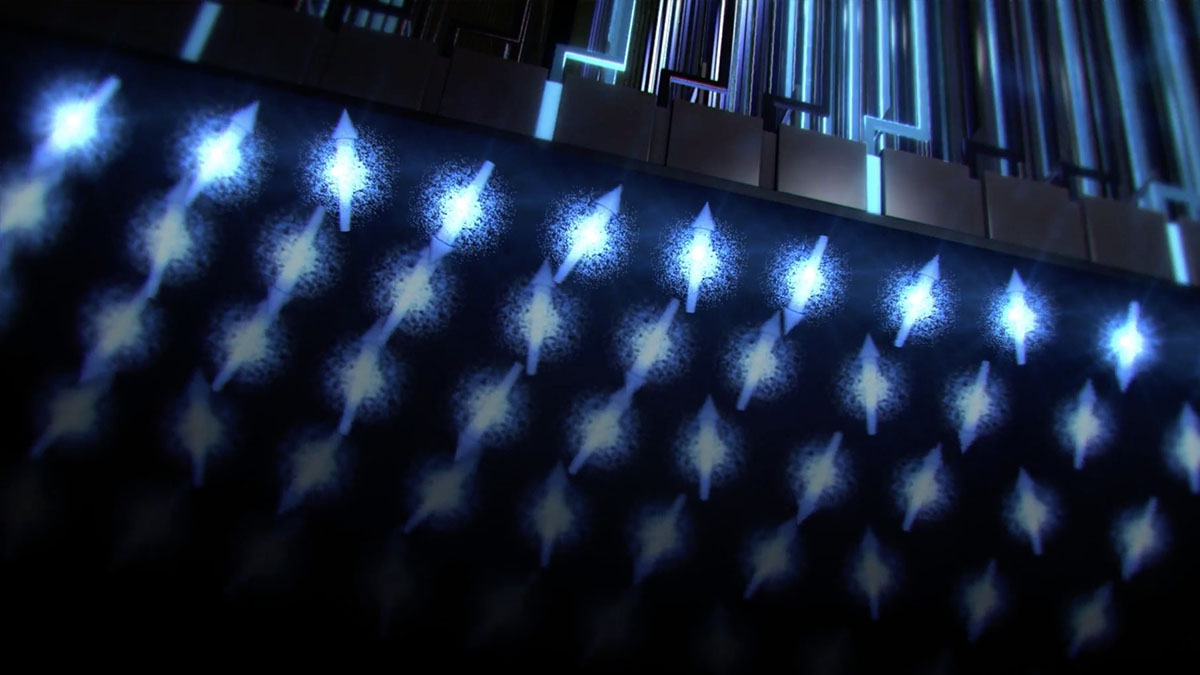rethinking quantum states and computers

By now, it’s well known that atoms and molecules can be in more than one state at the same time and do very odd things depending on their quantum states. However, somewhere along the line, this odd behavior has to stop, otherwise our world would be a very strange one. Objects would change temperatures and positions on a whim of the quantum mesh. People around us would seem to be in front of us and across the street at the same time for a blink of an eye. Cars would pass through each other or appear to teleport from one stoplight to the next. Since that isn’t happening, there must be something that puts a stop to quantum mechanics ruling the macro world and collapses the waveform function. That something may be the effects of gravity which has no sway on the quantum level but holds entire galaxy clusters together on a cosmic scale. So if you crossed a certain mass and size, the laws of macro physics take over and the quantum effects cease, right? Not quite…
According to a series of experiments by physicists at UCSB even something as big as 200 micrometers will still be subject to quantum effects when cooled to nearly -459°F, a temperature otherwise known as absolute zero, and zapped with packets of energy on a quantum level. Sure, a hyper-sensitive resonator 200 µm across doesn’t sound like much but until this experiment, virtually all of the objects which exhibit quantum mechanical effects measured just angstroms across, making UCSB’s resonator billions of times bigger than the largest molecule to exhibit the phenomena in question. The difference between this brand new quantum system that contains roughly a trillion atoms and a 60 atom buckyball, which was hypothesized to be the limit of quantum effects on the larger world, is similar to one between something the size of a human and an object the size of an average city. And the results of the experiment also seem to imply that getting quantum mechanical effects to show up in macroscopic objects is just a matter of getting the objects into a quantum state.
While this could’ve been an interesting look into the blurry line between the quantum world and the world that we know on a macro scale, it was actually a proof of concept test for a potential storage system in a quantum computer. Being able to manipulate mechanical systems on a scale that’s not too far off from what we see in today’s computers and reading the oscillations to determine the states of the qubits would make a functional quantum computing machine that much more feasible.
While you could conceivably make something the size of a mobile phone as powerful as some of today’s top of the line consumer desktops, cooling it to within just a few decimal points of absolute zero would be pretty difficult and finding a place where such a machine could use the natural marrow-solidifying temperatures of space without several tons of machinery attached to it would require a trip to either the most remote areas of the Moon (which would still be roughly 62°F higher than you’d need) or the Boomerang Nebula, the coldest known region space space located about 5,000 light years away, where you would be at least flirting with the required temps.
Since we already know how to reach impressively close to absolute zero right here on Earth, it would make sense to aim for developing quantum computers that won’t replace current technology but instead, aim for the kind of efficiency modern processing power can’t even dream of without a major update, and offer an upgrade to the field of supercomputing that would make today’s most complex simulations a snap to run, provided that their algorithms are updated to take advantage of all quantum computing has to offer of course. It’s not like the machine could actually be moved so you might as well try to make a stationary hyper-computer.
But don’t fear for today’s laptops, desktops and smart phones. They’ll also benefit from research into quantum physics, only their path to greater efficiency and faster processing speeds will come from a set of experiments intended to reach temperatures in the range of 4 trillion degrees by making a quark/gluon plasma…
See: O’Connell, A., et. al., (2010). Quantum ground state and single-phonon control of a mechanical resonator Nature DOI: 10.1038/nature08967





